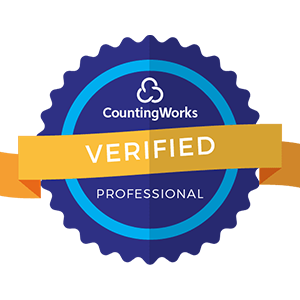In today's rapidly evolving business landscape, organizations must be proactive in preparing for future leadership needs. Succession planning is a critical component of ensuring long-term success and stability within a company. It involves identifying and developing high-potential employees to fill key leadership positions, should the need arise. By implementing a comprehensive succession planning strategy, organizations can mitigate the risks associated with unexpected departures, retirements, or promotions while also fostering a culture of growth and development.
This article will explore the essential elements of an effective succession planning strategy, providing insights and practical guidance for organizations looking to secure their future leadership pipeline. We will delve into the importance of aligning succession planning with overall business objectives, identifying and assessing high-potential employees, and creating targeted development plans to prepare them for future leadership roles. Additionally, we will discuss the role of mentorship, coaching, and experiential learning in accelerating the growth of emerging leaders.
By the end of this article, readers will have a deep understanding of the key components of a successful succession planning strategy and will be equipped with actionable steps to implement within their own organizations. Whether you are a human resources professional, a senior executive, or a business owner, this article will provide valuable insights and practical guidance to help you secure your organization's future leadership needs.
The Importance of Succession Planning

"By failing to prepare, you are preparing to fail." - Benjamin Franklin
Succession planning is not just a nice-to-have; it is a strategic imperative for organizations of all sizes and industries. Here are some compelling reasons why succession planning should be a top priority:
- Ensures Business Continuity: Unexpected departures or retirements of key leaders can create significant disruptions to business operations. By having a well-defined succession plan in place, organizations can minimize the impact of these transitions and ensure a smooth transfer of responsibilities to the next generation of leaders.
- Mitigates Risk: Succession planning helps organizations mitigate the risks associated with leadership vacuums. When key positions are left unfilled for extended periods, it can lead to a loss of institutional knowledge, decreased employee morale, and missed business opportunities. By proactively identifying and developing potential successors, organizations can minimize these risks and maintain stability during times of transition.
- Attracts and Retains Top Talent: A robust succession planning strategy sends a powerful message to employees that the organization is invested in their long-term growth and development. By providing clear career paths and opportunities for advancement, organizations can attract and retain top talent, reducing turnover and enhancing employee engagement.
- Aligns with Business Strategy: Effective succession planning is not a standalone initiative; it must be aligned with the overall business strategy. By identifying the key leadership competencies required to execute the company's strategic objectives, organizations can develop a pipeline of leaders who are well-equipped to drive the business forward.
- Fosters a Culture of Growth and Development: Succession planning creates a culture of continuous learning and development within the organization. By investing in the growth of high-potential employees, organizations can cultivate a deep bench of talent that is ready to step into leadership roles as needed.
Identifying and Assessing High-Potential Employees
"The key to successful leadership today is influence, not authority." - Ken Blanchard
At the heart of any successful succession planning strategy is the ability to identify and assess high-potential employees. These are individuals who possess the skills, attributes, and potential to assume key leadership roles in the future. Here are some best practices for identifying and assessing high-potential employees:
- Define Leadership Competencies: Start by defining the key leadership competencies required for success in your organization. These may include strategic thinking, emotional intelligence, adaptability, and the ability to inspire and motivate others. Use these competencies as a framework for assessing potential successors.
- Conduct Regular Performance Reviews: Regular performance reviews provide valuable insights into an employee's strengths, areas for improvement, and potential for growth. Use a combination of quantitative metrics and qualitative feedback to assess an employee's performance and potential.
- Seek Input from Multiple Perspectives: Don't rely solely on the opinions of direct supervisors. Seek input from peers, subordinates, and other stakeholders to gain a well-rounded view of an employee's potential. 360-degree feedback can be a powerful tool for identifying high-potential employees.
- Look Beyond Technical Skills: While technical expertise is important, it is not the only predictor of leadership potential. Look for employees who demonstrate strong interpersonal skills, adaptability, and a growth mindset. These qualities are critical for success in leadership roles.
- Use Objective Assessment Tools: Objective assessment tools, such as personality inventories and cognitive ability tests, can provide valuable insights into an employee's potential for leadership. These tools can help identify strengths and development areas, and can be used in conjunction with other assessment methods.
- Engage in Talent Review Discussions: Regularly engage in talent review discussions with senior leaders and HR professionals to identify high-potential employees across the organization. These discussions should focus on an employee's performance, potential, and readiness for future leadership roles.
Creating Targeted Development Plans

"The only way to do great work is to love what you do." - Steve Jobs
Once high-potential employees have been identified, the next step is to create targeted development plans to prepare them for future leadership roles. Here are some key elements of effective development plans:
- Align with Business Objectives: Development plans should be aligned with the overall business objectives and the specific leadership competencies required for success. This ensures that the development activities are relevant and impactful.
- Provide Stretch Assignments: Stretch assignments are challenging projects or roles that push employees outside of their comfort zones and provide opportunities for growth. These assignments can help high-potential employees develop new skills, gain exposure to different parts of the business, and demonstrate their leadership potential.
- Offer Formal Training and Development: Formal training and development programs, such as leadership workshops, executive education courses, and skill-building seminars, can provide high-potential employees with the knowledge and tools they need to succeed in leadership roles.
- Encourage Mentorship and Coaching: Mentorship and coaching can be powerful tools for accelerating the growth of high-potential employees. Pair emerging leaders with experienced mentors who can provide guidance, support, and feedback. Consider implementing a formal coaching program to provide targeted development opportunities.
- Provide Exposure to Senior Leaders: Exposure to senior leaders can help high-potential employees gain valuable insights into the business, build relationships, and learn from experienced leaders. Consider creating opportunities for emerging leaders to present to senior executives, participate in strategic planning sessions, or attend leadership meetings.
- Emphasize Experiential Learning: Experiential learning, such as job rotations, cross-functional projects, and international assignments, can provide high-potential employees with hands-on experience and exposure to different parts of the business. These experiences can help emerging leaders develop a broad perspective and build critical leadership skills.
- Incorporate Feedback and Coaching: Regular feedback and coaching are essential for helping high-potential employees grow and develop. Encourage managers to provide ongoing feedback and coaching to help emerging leaders identify strengths, areas for improvement, and opportunities for growth.
The Role of Mentorship and Coaching
"A mentor is someone who sees more talent and ability within you, than you see in yourself, and helps bring it out of you." - Bob Proctor
Mentorship and coaching play a critical role in accelerating the growth and development of high-potential employees. Here are some key benefits of mentorship and coaching in succession planning:
- Knowledge Transfer: Mentors can provide valuable insights and knowledge gained from years of experience in leadership roles. They can help emerging leaders navigate complex challenges, avoid common pitfalls, and develop a deep understanding of the business.
- Skill Development: Coaches can help high-potential employees develop specific skills and competencies required for success in leadership roles. They can provide targeted feedback, guidance, and support to help emerging leaders build critical leadership skills.
- Networking Opportunities: Mentors and coaches can help high-potential employees build relationships across the organization and expand their professional networks. These relationships can be valuable for future career growth and advancement.
- Increased Confidence: Mentorship and coaching can help high-potential employees build confidence in their abilities and leadership potential. By providing ongoing support and encouragement, mentors and coaches can help emerging leaders overcome self-doubt and take on increasingly challenging roles.
- Retention and Engagement: Mentorship and coaching programs can help retain high-potential employees by providing them with opportunities for growth and development. These programs can also increase employee engagement by demonstrating the organization's commitment to their long-term success.
Best Practices for Implementing a Succession Planning Strategy

"Succession planning is not just about filling positions, it's about building a leadership pipeline." - unknown
Implementing a comprehensive succession planning strategy requires a deliberate and systematic approach. Here are some best practices to consider:
- Secure Executive Sponsorship: Succession planning must be a top priority for senior leaders. Secure executive sponsorship to ensure that succession planning efforts are aligned with overall business objectives and have the necessary resources and support.
- Align with Talent Management Processes: Integrate succession planning with other talent management processes, such as performance management, learning and development, and talent acquisition. This ensures a holistic approach to talent management and helps identify and develop high-potential employees across the organization.
- Regularly Review and Update Plans: Succession plans should be regularly reviewed and updated to reflect changes in the business, leadership needs, and employee development. Conduct annual talent review discussions to assess the readiness of potential successors and adjust development plans as needed.
- Communicate Transparently: Communicate succession planning efforts transparently to employees, while also managing expectations. Provide clarity around the criteria for identifying high-potential employees and the development opportunities available to them.
- Measure and Evaluate Effectiveness: Establish metrics to measure the effectiveness of succession planning efforts. Track key indicators such as retention rates of high-potential employees, internal promotion rates, and leadership bench strength. Use this data to continuously improve succession planning processes.
- Foster a Culture of Development: Create a culture that values continuous learning and development. Encourage employees at all levels to take ownership of their career growth and provide opportunities for skill-building and professional development.
- Prepare for the Unexpected: While succession planning is focused on preparing for planned transitions, it is also important to prepare for unexpected departures or absences. Develop emergency succession plans for critical roles and ensure that there is a deep bench of talent ready to step in when needed.
Conclusion
Developing a comprehensive succession planning strategy is essential for ensuring the long-term success and stability of an organization. By identifying and developing high-potential employees, creating targeted development plans, and fostering a culture of growth and development, organizations can build a deep bench of talent that is ready to step into leadership roles as needed.
Implementing a succession planning strategy requires a deliberate and systematic approach, as well as the support and commitment of senior leaders. By following best practices and continuously measuring and evaluating the effectiveness of succession planning efforts, organizations can create a sustainable pipeline of future leaders.
"Succession planning is not just about filling positions, it's about building a leadership pipeline that can drive the organization forward in the face of change and uncertainty." - unknown
In today's rapidly evolving business landscape, organizations that prioritize succession planning will be better equipped to navigate challenges, seize opportunities, and achieve long-term success. By investing in the growth and development of high-potential employees, organizations can ensure that they have the leadership talent needed to thrive in the future.
Key Takeaways
- Succession planning is a critical component of ensuring long-term success and stability within an organization.
- Identifying and assessing high-potential employees requires a combination of performance reviews, input from multiple perspectives, and objective assessment tools.
- Targeted development plans should be aligned with business objectives and provide stretch assignments, formal training, mentorship, and experiential learning opportunities.
- Mentorship and coaching play a critical role in accelerating the growth and development of high-potential employees.
- Implementing a succession planning strategy requires executive sponsorship, alignment with talent management processes, regular review and updating of plans, transparent communication, and a culture of development.
- Organizations that prioritize succession planning will be better equipped to navigate challenges, seize opportunities, and achieve long-term success in the face of change and uncertainty.
By following the insights and practical guidance provided in this article, organizations can develop a comprehensive succession planning strategy that prepares them for future leadership needs and ensures a sustainable pipeline of talent for years to come. The investment in succession planning today will pay dividends in the future, as organizations build the leadership bench strength needed to drive success in an ever-changing business landscape.






